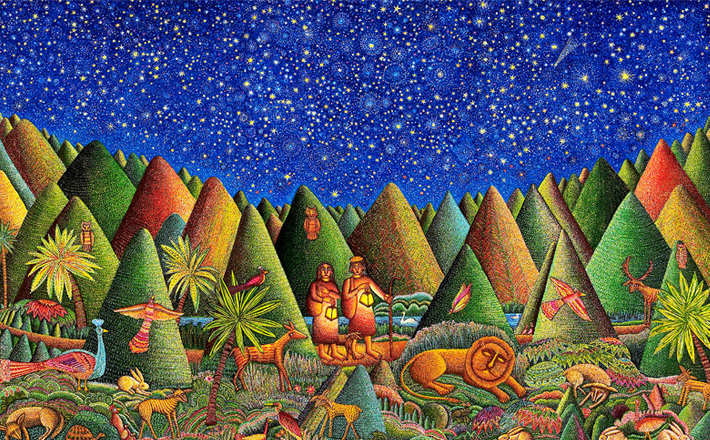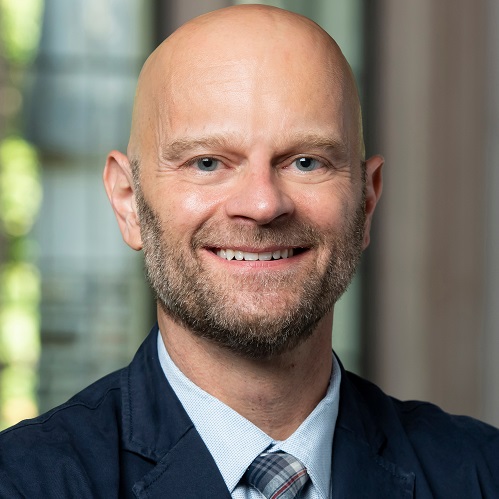Commentary on Ezekiel 37:1-14
Few people these days, or so it seems, know much about the long, complex, and exceedingly odd book of the prophet Ezekiel.
But if they know anything, it’s likely to be Ezekiel 37:1-14, if only because it was the inspiration for the old spiritual, “Dem Bones,” by James Weldon Johnson, recorded by The Famous Myers Jubilee Singers in 1928. The lyrics include a litany of various bones, their connections, and an address that they listen to Ezekiel’s prophecy.
Toe bone connected to the foot bone
Foot bone connected to the heel bone…
Now hear the word of the Lord.
Dem bones, dem bones gonna walk around
Dem bones, dem bones gonna rise again.
Now hear the word of the Lord….
But if this passage is somewhat familiar, given the catchy tune accompanying this lyric, the details of the text are nothing short of ghoulish — or, better, cadaverous. The unit is famous for its possible relationship to notions of resurrection in ancient Israel, but before any talk of resurrection is raised (pun intended in this case), the intensely morbid nature of Ezekiel’s vision must be fully reckoned with. And the downright chilling vision of a valley full of bones doesn’t yet mention the equally unnerving depiction of these disarticulated bones coming together, bone by bone, then sinew by sinew, then covered by flesh, then skin, but still somehow dead — as if this valley was full of zombies. If there is to be new life and resurrection, that is, it will only come after disjointed, desiccated, even ghastly death. To put in the parlance of the Passion: there is no daybreak on Easter Sunday morning without that cruel, grim, violently bloody Friday.
The scene takes place while Ezekiel is under “the LORD’s power,” and while he was “in the LORD’s spirit” (verse 1a; CEB), and so it is clearly a prophetic vision — a visual metaphor, as it were, as the later explanation offered by God makes clear (verse 11). The valley where the vision takes place is eerie enough, since it is full of bones (verse 1b), but things get even more spine-tingling when God leads him through and around all of those bones thoroughly (Hebrew sabib sabib, “around (and) around”). Not only are there thousands of bones for Ezekiel to wade through (each human body has over 200 bones), they are said to be “very dry” (verse 2). These bodies have been dead a long time, therefore; all that is left of them is the bones, and those are brittle, exposed to the elements, no doubt, for only God knows how long.
After this grisly tour, the God who knows how long these bodies have been exposed asks Ezekiel a straightforward but stupefying question: “Can these bones live?” (verse 3a).
All the evidence is to the contrary, of course: all those bones, dead for so long, so dry, so brittle. But Ezekiel responds to the question with an answer that is also somewhat stupefying. In a wooden translation, it reads: “My Lord, YHWH, you, you know” (verse 3b). The second person independent pronoun “you” in this verse is unnecessary in Hebrew and may signal emphasis in some fashion. Perhaps a paraphrase that approaches the tone is: “You may know the answer to that question, Lord; I definitely don’t!” But it is very hard to know Ezekiel’s tone here; what is certain is that he doesn’t jump in with some overly confident and hasty affirmation of faith, responding with an unequivocal “yes” to God’s question; once again: there are a whole lot of very dry bones, after all, everywhere you look (sabib sabib)! But neither does the prophet deny the possibility of God’s question outright. He demurs, or, better, defers — to the God who knows … and the God who wants to be known.
If this was some sort of prophetic test, we don’t know if Ezekiel passed. And it doesn’t seem to matter because God doesn’t respond to Ezekiel’s answer but immediately commands him to prophesy over the bones, ordering them to listen to the word of the Lord (verse 4). In this prophecy God promises imminent gifts arranged in an envelope-like structure:
breath and life (verse 5a)
sinews, flesh, and skin (verse 6a)
breath and life (verse 6b).
The repetition here seems to accent the breath (or “spirit”; Hebrew rua?) and life. The point of these gifts is found in verse 6c: “then you will know that I am the LORD.”
Ezekiel does what he’s told, but, not unlike the blind man who required a second touch (Mark 8:22-25), the work isn’t done after this first sermon to the bones. They are now connected, per the song, but remain zombie-like: a great host of bodies with no breath — and therefore no life (verses 7-8). So God tells Ezekiel to prophesy a second time, this time to the breath itself: that it come from the four winds and bring life to these dead bodies (verse 9).
This second sermon does the trick: the breath comes and the bodies come to life and stand up as an exceedingly large and impressive force (the Hebrew construction is again emphatic: gadol me’od me’od, “very, very large”).
But then comes a third sermon. This one is God’s sermon to the prophet and then to the exiles through the prophet because God is now ready to clarify the referents in this elaborate visual metaphor: “these bones,” God says, “are the entire house of Israel” (verse 11a). The exiles themselves, according to the Lord, have been saying that their bones were all dried up. God has evidently literalized their figurative speech in the vision of the dry bones, only to re-metaphorize it and given it back to the exiles in reply. God knows the exiles are speaking figuratively since they are also quoted as saying that their hope is gone and that they are completely cut off (verse 11b). But not anymore.
If the bone part of what the exiles said isn’t true, then maybe the part about their hope being gone or them being cut off isn’t quite right either. And yet God doesn’t rebut the exiles in the least; instead, the Lord affirms, repeatedly, that the exiles are indeed in “graves” (four times in verses 12-13) — but graves that God will open up in order to raise them up and return them back to their homeland. Now God is the one who speaks figuratively: these aren’t actual graves — Ezekiel’s audience is a live one, though a completely devastated one. And their deaths, their graves, their dashed hopes and feeling of being finished are the complicated result of human disobedience mixed with divine judgment.
It is of special note, then, that God claims these exiles in this third, climactic sermon, calling them “my people” twice (verses 12-13). God is fond of repetition in this last sermon: the Lord promises to open their graves twice and promises to raise them from those same graves twice more. And, should this emphasis-via-repetition not suffice, be unclear, or otherwise appear somehow incomplete, like the lifeless valley of reconstituted zombies in the vision, the final verse clarifies the breath that has been mentioned so often in this passage.
It is God’s breath, since God promises to put God’s own breath (spirit) on the exiles and to the same effect as the bodies in the valley: “and you will live.” God immediately shifts metaphors, playing the role of a divine gardener who plants Israel back on its own land. The goal of all this activity is, once again, that Israel “will know that I am the LORD.” And in the end, a three-fold staccato like reiteration, emphatic: “I’ve spoken, and I will do it. This is what the LORD says” (CEB).
Surely, these assurances and emphases found in the third, explanatory sermon, but that are also interwoven in the vision of dry bones, are designed to address the very real and comprehensive devastation that the exiles felt so far from home and so far from God’s good will. But that distance is now overcome, definitively — downright miraculously — by the God who plants, who opens up graves of people long dead (see John 11:39), who has resurrection power (John 11:25-26), whose very breath (spirit) enlivens (John 20:22).
Not to be missed, however, is that how God accomplishes these things among the exiles is through the breath of one of their fellow exiles, the prophet Ezekiel: breath from his lungs, forced out over the vocal cords, shaped into sounds by lips and tongue, expressed as words — God’s words that brought hope to those who felt like they were so far gone that no one and nothing could reach them. But, as the Creed confesses: “He descended to the dead.” And Ezekiel experienced this himself, when he looked up one day as he sat by the river Chebar, in Babylon, and saw God’s throne coming into exile too (Ezekiel 1:1-28).
One more thing: God did what God promised in Ezekiel 37:1-14. That demonstration shows, by the logic and testimony of this passage and the formula “then they will know that I am the LORD,” that the Lord is indeed God. When we realize this took place — that the exiles did return from Babylon — we ought to recognize in that act the Lord’s own work and being. The fact of that act is proof of God.
PRAYER OF THE DAY
God of breath,
You promised new life to your people in exile by breathing into a valley full of dry bones. Breathe new life into us, so that we might live passionately for you. Amen.
HYMNS
The word of God is source and seed ELW 506
Awake, O sleeper, rise from death ELW 452
CHORAL
There shall a star, Felix Mendelssohn


December 10, 2017